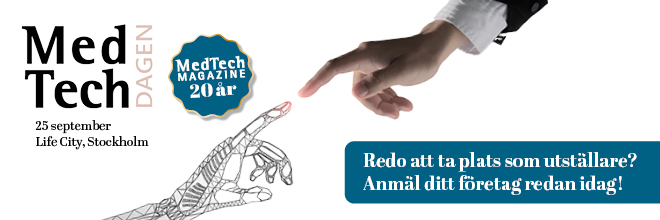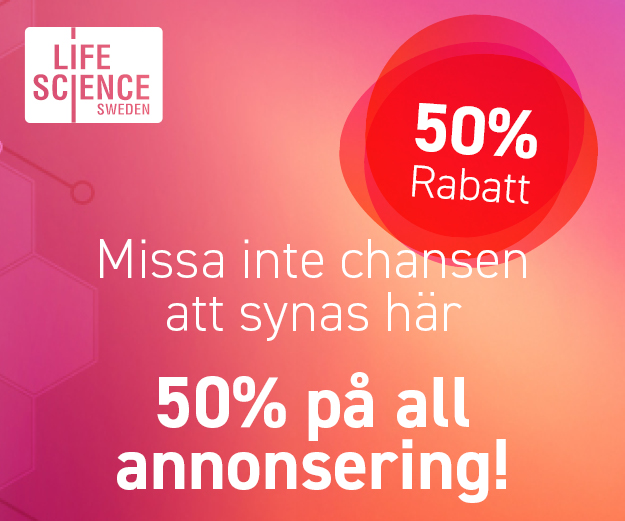Martin Bergö: "The Idea is the Thing"
Martin Bergö, 38, goes wherever ideas take him - it's a process that has led to, and resulted from, plenty of unexpected results. Those ideas have been recognized as good ones: in 2008, he was awarded the Eric K. Fernström Foundation's Prize for young researchers. It isn't the first award for the Associate Professor at Gothenburg University's Sahlgrenska Academy. In 2007, he received a grant award of 16 million SEK from the European Research Council for his pioneering work.
soon drawn to research, and had the gumption to approach various institutions for research opportunities with only one year of undergraduate work under his belt. He received his doctorate in Umeå while attending medical school there.
“It was a lot fun,” Martin Bergö says of his doctoral program, because he had plenty of freedom in his research – his Ph.D. supervisor, Thomas Olivecrona, gave him that freedom.
Martin Bergö believes that mentors matter. Greatly. “Olivecrona was at an advanced stage of his career and
could afford to let somebody be curious and do their own thing, and then just push me in the rightdirection along the way,” says Martin Bergö.
After Umeå, he did six years of post-doctoral work at the J. David Gladstone Institutes at the University of California, San Francisco (UCSF). He’s learned much along the way. Take commercialization, for example. As Bergö sees it, commercialization is important and valuable. It drives
innovation and ideas into the market, helping society in the long run.
“Definitely, that’s the case it’s very important,” Martin Bergö says.
But while clinical relevance is a key part of the endeavor,
it is just one part. It’s also important for basic research to be driven fundamentally by curiosity and the quest for a good idea, says Marin Bergö. Curiosity-driven basic research tends to raise original, probing disease-oriented research questions
sooner or later. Martin Bergö urges funders and commercial facilitators to bear that in mind.
Welcoming the unexpected
Curiosity and welcoming the unexpected have driven Martin Bergö’s work. His team was the first to develop a gene-manipulated mouse model to test the idea that both cancer and progeria can be treated effectively with the same enzyme inhibitors. Certain enzymes govern the movement of
mutated CAAX proteins to points in cells where they become toxic. Inhibiting those enzymes may prevent that movement, potentially slowing down or reversing the growth of tumors. This latest work is an outgrowth of research by Bergö and
researchers at UCSF and the University of California,
Los Angeles. Discoveries made there by Bergö and others have led cancer-centered research on CAAX-processing enzymes into the field of aging.
The accelerated aging disorder is extremely rare – but it has mechanical connections to cancer. Understanding those connections could have enormous implications. Martin Bergö’s approach may or may not lead to treatments for these cancers. Still, the team’s work “will increase understanding about how the mutated proteins are
processed in the cell,” he says. That matters greatly, because those protein mutations are found in about one-third of all cancers, including virtually all pancreatic cancers, half of colon cancers, and are prevalent in lung cancer and acute myelogenous leukemia, according to Martin Bergö. The
team’s work may also provide important new insights into the normal aging process.
Big surprises
Now, Martin Bergö and his team are exploring this overall idea using genetic strategies. There are currently two drug targets: one is a previously tested cancer drug; the other is “entirely novel.” Martin Bergö clearly is excited about the potential of the ongoing work. Taking the genetic tack may steer off the traditional drug development course, “but it’s required in order to understand exactly what’s going on there,” Martin Bergö says.
And being willing to steer off the traditional drug course is
par for the course for Martin Bergö – because again, the idea is the thing.
“All big discoveries are surprises. We are fortunate to be in a position where we can be a little bit crazy, do experiments that are long shots – we call them fishing expeditions – and follow up on totally unexpected results, that’s compelling to me,” Martin Bergö says.
Doing things this way recently opened up a totally unexpected side result in a new research area for his team: inflammation and rheumatoid arthritis. Details are slated to be published in 2009.
Tips for young researchers
Martin Bergö has definite views on what it takes to succeed. First, as a project leader, he often interviews potential members of his research team, which now numbers 11 people. He looks for,among other things, an applicant’s personal drive and determination.
Martin Bergö says Gothenburg University is a good place to be, because the university’s Sahlgrenska Academy has very good connections with the pharmaceutical industry, particularly Astrazeneca. He cites professors who have worked at the company, and Ph.D. and post-doctoral students who are jointly funded and jointly supervised.
That approach is not for everyone: it works best for those students seeking a commercial, as opposed to an academic, position, Martin Bergö believes.
Don’t hesitate to switch to new fields Martin Bergö urges other young researchers to do post-doctoral research abroad for at least three years – the track record in terms of publishing and advancement points to that route. He also urges them to be willing to switch research fields and
forge into new environments. He tells young researchers
“Don’t be afraid of a result that doesn’t confirm a hypothesis. Work toward being good at taking advantage of all types of results – results that refute a hypothesis and results that verify it.”
Also, seek out environments where such approaches
are fostered, Martin Bergö says.
The Sahlgrenska Academy offers such an environment,
Martin Bergö says. “It’s the techniques that unify us, not the disease.” Things are not done by routine - there are plenty of collaborations and productive surprises.
Accordingly, Bergö says that five years from now, there’s no telling what disease field he may be working on. But he’s certain that whatever field he’s in, the idea will still
be the thing.


